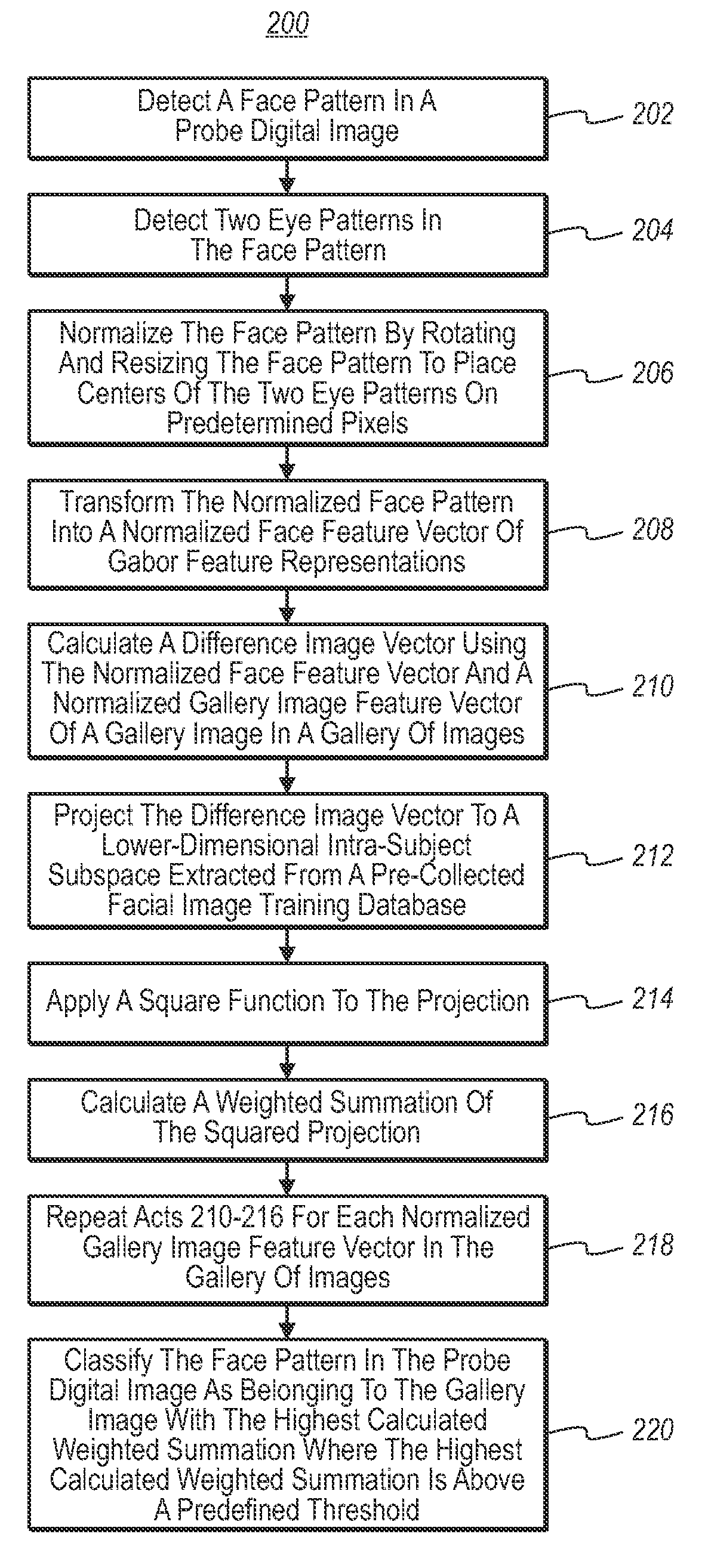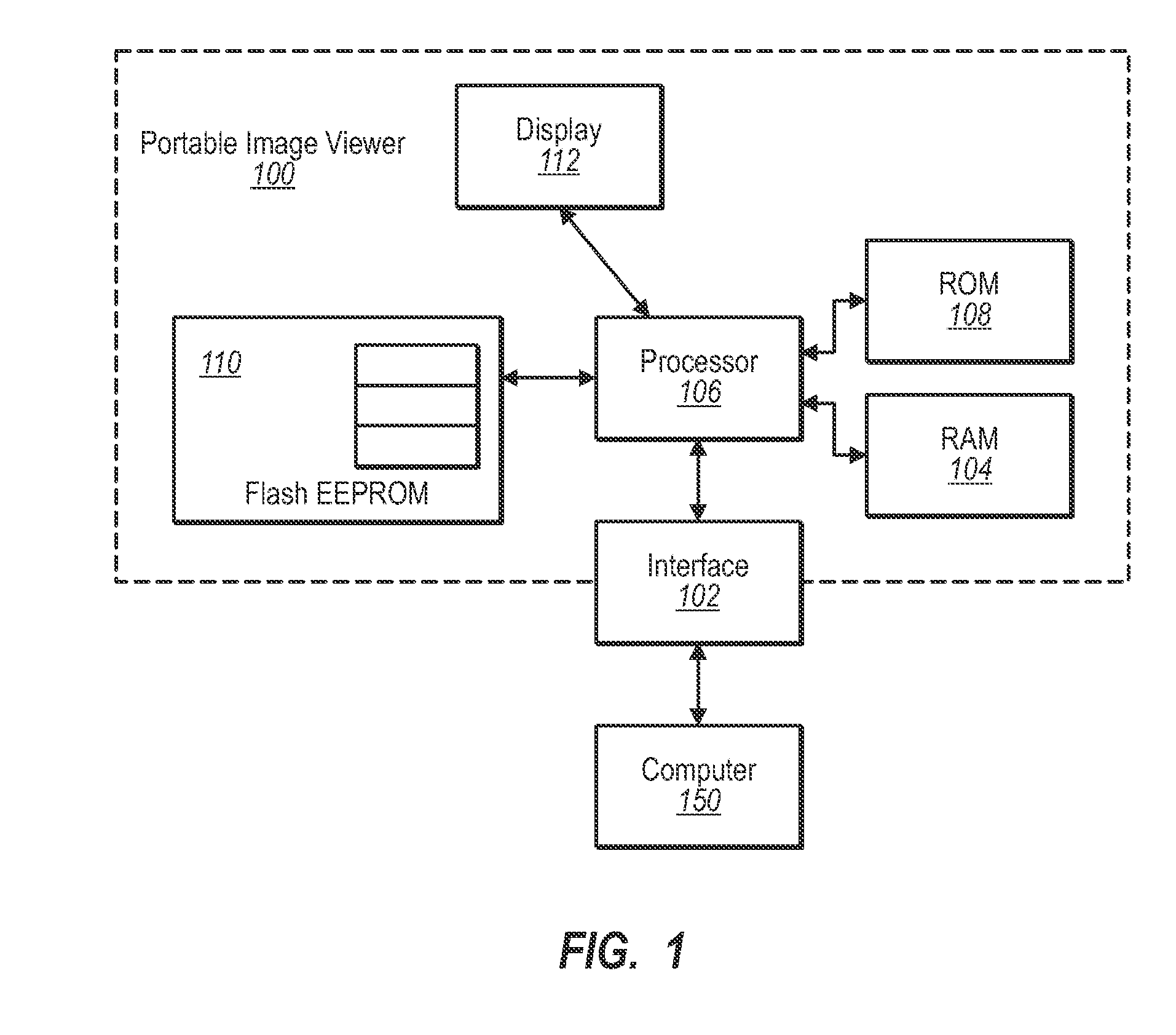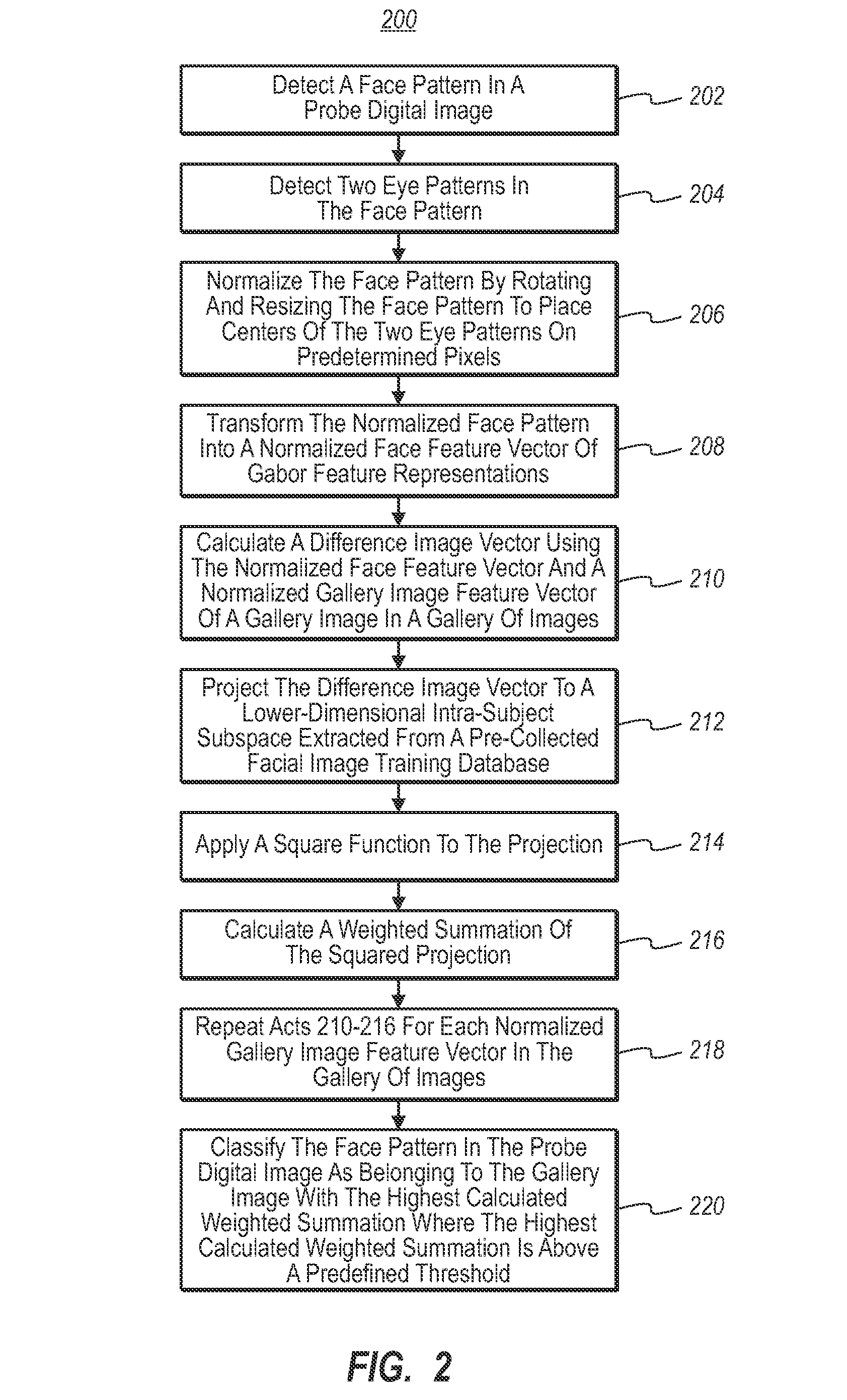Automatic Face Recognition
a face recognition and face technology, applied in the field of automatic face recognition, can solve the problems of many learning algorithms mathematically intractable or empirically unstable, and the dimensionality of the sample space combined with the limited number of face samples available,
- Summary
- Abstract
- Description
- Claims
- Application Information
AI Technical Summary
Benefits of technology
Problems solved by technology
Method used
Image
Examples
example implementation
III. Example Implementation of the Example Method
[0035]An example implementation of the example method 200 of FIG. 2 will now be disclosed in connection with FIGS. 3-8. As disclosed in FIG. 3, the example implementation 300 includes the following processes: face detection 302, eye detection 304, face normalization 306, Gabor feature extraction 308, Bayesian feature extraction 310, and classification 312. Each of these processes will now be discussed in turn.
[0036]With reference now to FIG. 4, an example face normalization process 400 is disclosed. At 202, a face pattern 404 is detected in a probe digital image 402. Where the probe digital image 402 is a full color image, the probe digital image 402 may also be transformed to gray-scale by, for example, removing all but the luminance component in YCbCr color space. Other color to gray-scale transformation operators can also alternatively be applied such as averaging the red, green and blue channel values as (R+G+B) / 3. Then, at 204, t...
PUM
 Login to View More
Login to View More Abstract
Description
Claims
Application Information
 Login to View More
Login to View More - R&D
- Intellectual Property
- Life Sciences
- Materials
- Tech Scout
- Unparalleled Data Quality
- Higher Quality Content
- 60% Fewer Hallucinations
Browse by: Latest US Patents, China's latest patents, Technical Efficacy Thesaurus, Application Domain, Technology Topic, Popular Technical Reports.
© 2025 PatSnap. All rights reserved.Legal|Privacy policy|Modern Slavery Act Transparency Statement|Sitemap|About US| Contact US: help@patsnap.com



